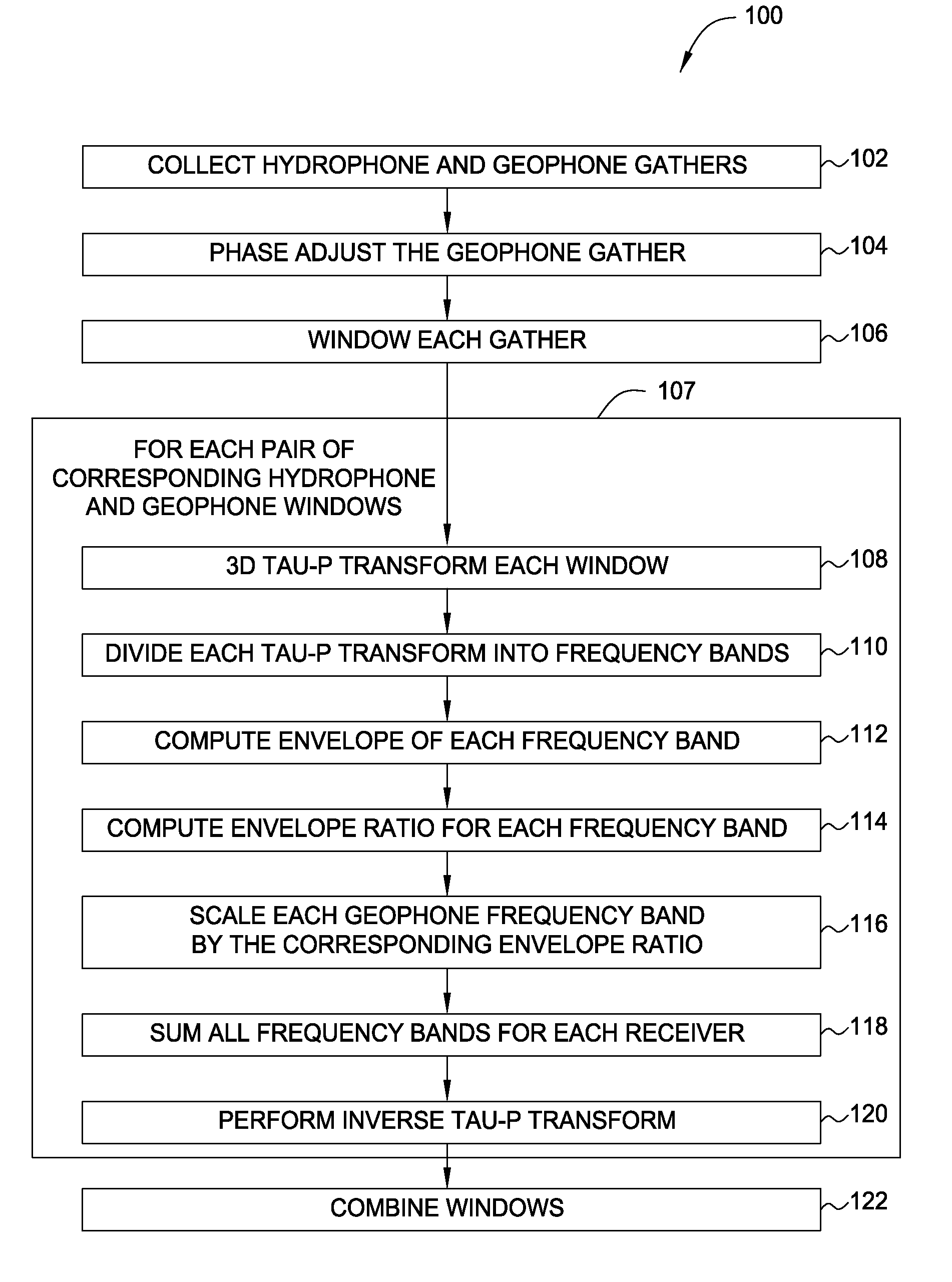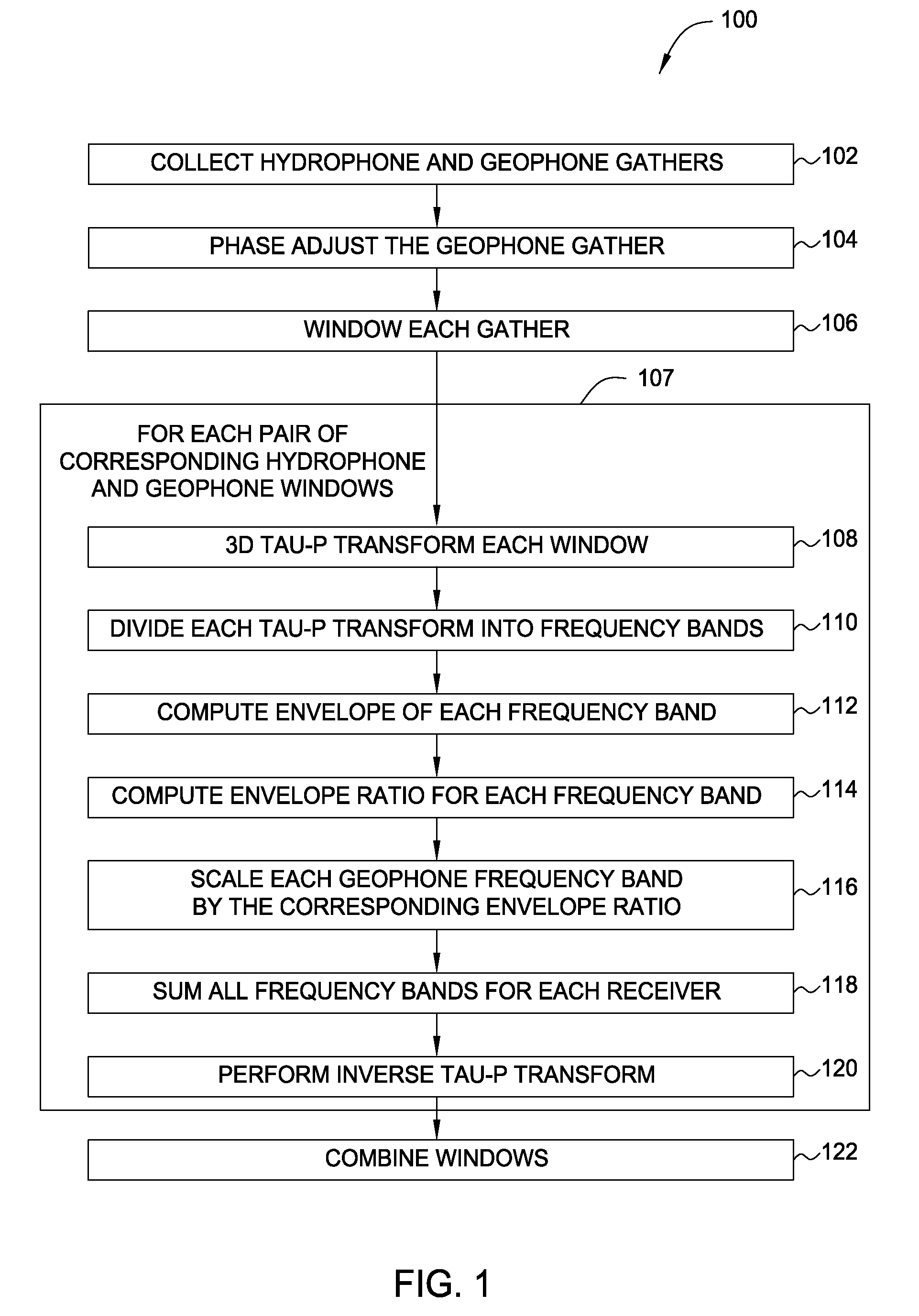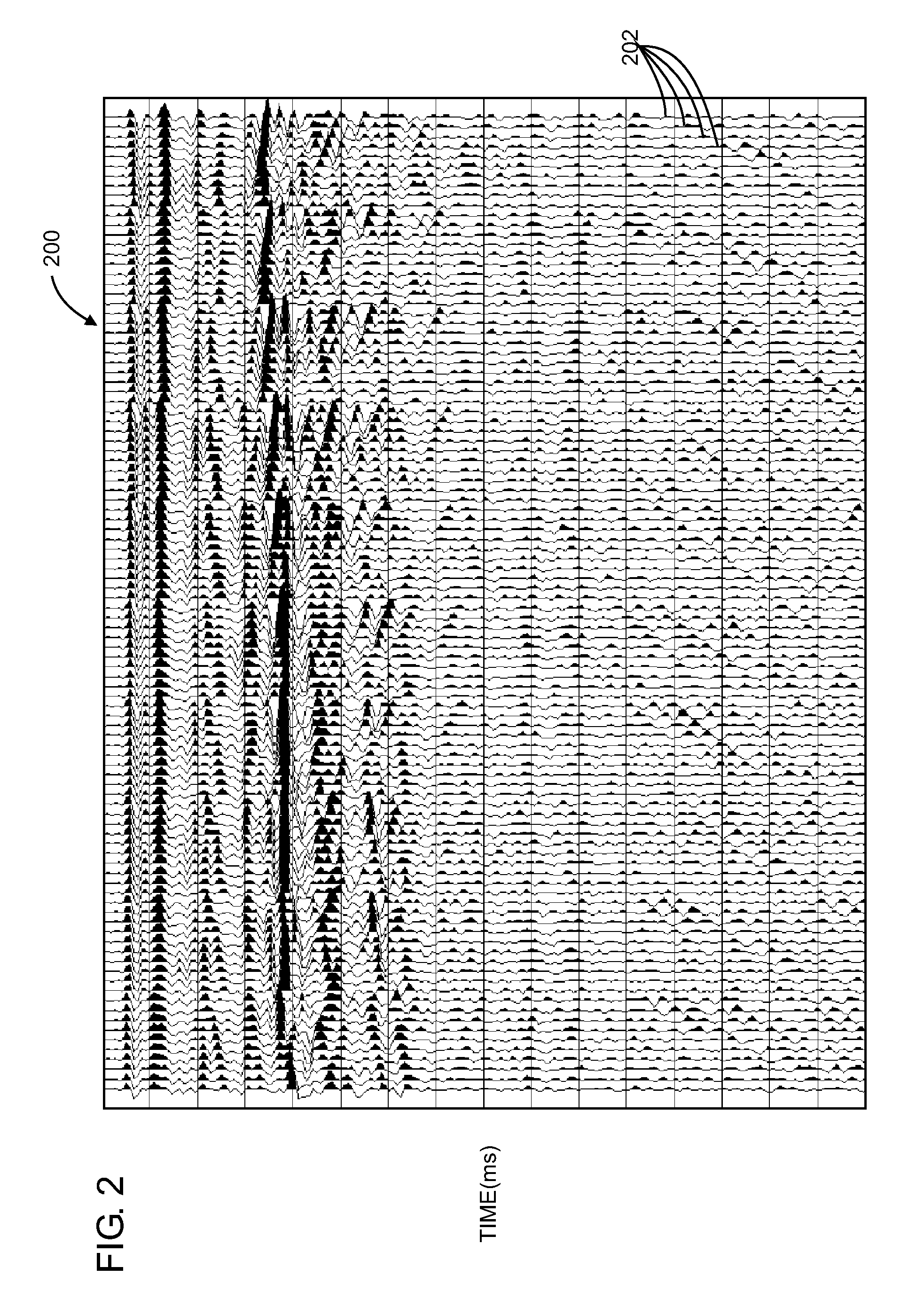Geophone noise attenuation and wavefield separation using a multi-dimensional decomposition technique
a multi-dimensional decomposition and geophone technology, applied in the field of geophone noise attenuation and wavefield separation using a multi-dimensional decomposition technique, can solve the problems of increasing the odds of hitting an economically recoverable reservoir, reducing the odds of wasting money and effort on a nonproductive well, and the interpretation of seismic data is much more complicated than its basic principles, so as to remove noise and enhance the effect of wavefield separation
- Summary
- Abstract
- Description
- Claims
- Application Information
AI Technical Summary
Benefits of technology
Problems solved by technology
Method used
Image
Examples
Embodiment Construction
[0049]Embodiments of the present invention provide methods and apparatus for processing dual sensor (e.g., hydrophone and vertical geophone) data that includes intrinsic removal of noise as well as enhancing the wavefield separation. The methods disclosed herein are based on a decomposition of data simultaneously into dip and frequency while retaining temporal locality. The noise removed may be mainly coherent geophone noise from the vertical geophone, or V(z) noise, and the effects may be most noticeable for deep water gathers.
[0050]Paffenholz et al., herein incorporated by reference, show that the V(z) noise is not caused by deficiencies in the instrumentation pod as has sometimes been assumed, but is a true recording of shot-generated seafloor undulations (see Paffenholz, J., P. Docherty, R. Shurtleff, and D. Hays, “Shear wave noise on OBS vz data—Part II: Elastic modeling of scatterers in the seabed,” 68th Conference and Exhibition, EAGE, Expanded Abstracts, B046 / B047, 2006a). S...
PUM
 Login to View More
Login to View More Abstract
Description
Claims
Application Information
 Login to View More
Login to View More - R&D
- Intellectual Property
- Life Sciences
- Materials
- Tech Scout
- Unparalleled Data Quality
- Higher Quality Content
- 60% Fewer Hallucinations
Browse by: Latest US Patents, China's latest patents, Technical Efficacy Thesaurus, Application Domain, Technology Topic, Popular Technical Reports.
© 2025 PatSnap. All rights reserved.Legal|Privacy policy|Modern Slavery Act Transparency Statement|Sitemap|About US| Contact US: help@patsnap.com



